Security Forces Open Fire At Mourners Of Killed Protesters

Protests rage in Iran Thursday with cities of Arak and Karaj scenes of clashes as regime’s forces opened fire at mourning ceremonies of two dead protesters.

Protests rage in Iran Thursday with cities of Arak and Karaj scenes of clashes as regime’s forces opened fire at mourning ceremonies of two dead protesters.
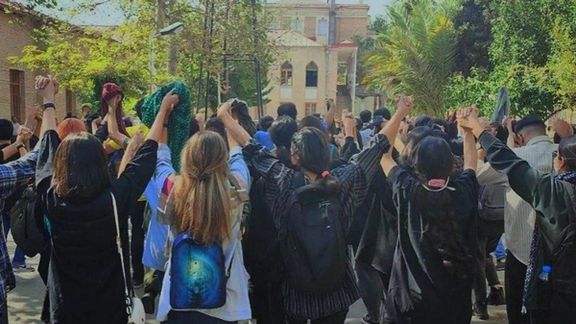
The following feature article is a full re-print from Reuters on protests in Iran.
-----------------------------------------------------------------------------------------------------------------------------
As a child in Iran, Shideh heard her parents warn her older siblings against taking part in anti-government demonstrations because of the bloody crackdown that would follow. But today, with protests raging across Iran, things have changed.
Both Shideh - now a teenager - and her mother say they have joined seven weeks of demonstrations ignited by the death of a 22-year-old woman, Mahsa Amini, in the custody of Iran's morality police.
The protests triggered by Amini's death on Sept. 16 have shown the defiance of many young Iranians in challenging the clerical leadership, overcoming fear that has stifled dissent in the wake of the 1979 Islamic Revolution.
"I have one life and I want to live it freely," said Shideh, 17, who asked that her family name not be used. "We are not scared of being killed. We will eventually change the regime."
Her sentiment was echoed by a dozen young Iranians from across the country interviewed by Reuters by phone. The students, who asked not to be named, said the protests reflect what many young Iranians see as a darkening future for a country ruled by hardliners seeking to tighten rigid social controls.
Iranian officials, who have blamed Amini's death on preexisting medical problems, say the unrest has been fomented by foreign enemies including the United States, and accuse armed separatists of perpetrating violence.
Iran's interior ministry and chief of police's office did not immediately respond to a request for comment for this story.
The authorities have used tried-and-tested means of quelling dissent - from tear gas and bullets to intimidation and arrests - many young demonstrators have remained unbowed.
"Shoot us! We are not afraid anymore," shouted a small group of young women kneeling without their headscarves in front of riot policemen in Tehran last week, in one video shared on social media.
More than two-thirds of Iran's 85 million people are under the age of 30. Even if the latest protests subside, the fearlessness of young Iranians could spell more trouble ahead for the establishment, according to rights activists, analysts and one former moderate official, who spoke to Reuters on condition of anonymity.
The power wielded by Iran's security apparatus still looms large: Shideh and her mother declined to be identified for safety reasons, and also requested their location in Iran not be disclosed.
But for Shideh's mother, the death of Amini - who was arrested for "inappropriate attire" - marked a turning point.
It "changed everything", she said.

Too frightened to oppose Iran's ruling clerics for years, she has joined thousands of women at the forefront of protests that have turned into a revolt against what demonstrators describe as increasing authoritarianism.
"I cried for days for Mahsa. My Shideh could be arrested by the morality police and killed like Mahsa. That thought hit me hard," said her mother, speaking from her home in central Iran.
"As a mother, I feel I should stay on the streets and reclaim Iran for my daughter, for all Iranian girls."
SYMBOL OF GRIEVANCES
Amini's death has become a symbol for many of the manifold grievances in Iranian society, galvanising some protesters to demand the downfall of the Islamic Republic.
As a young woman, her death sparked anger among Iranians who do not want their daughters arrested because of how they dress. As a Kurd, her death touched on long-standing minority grievances in Iran, a mosaic of ethnic and religious groups that say they have long faced discrimination by Tehran.
Experts on Iran say the clerical establishment's staying power has been underpinned since the 1979 revolution by its willingness to use whatever force is necessary to silence dissent.
But "fear has a limit, like repression", said Saied Golkar, an Assistant Professor of political science at the University of Tennessee at Chattanooga.
"There is a turning point when repression and fear don't work anymore: when people realize they have power when they act collectively and when they fear the gloomy future more than the regime," he said.
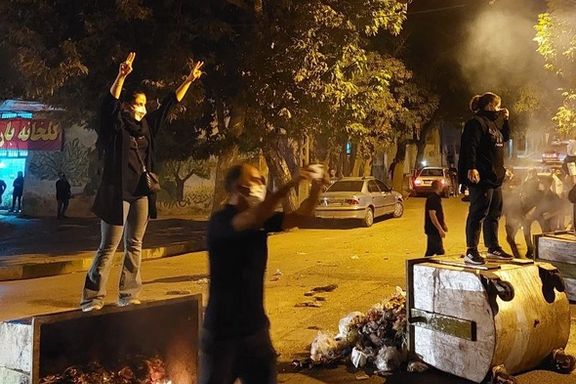
For the first time, schoolgirls have taken into streets, along with thousands of Iranians from all walks of life, including ethnic minorities.
"It's a revolution to end years of discrimination. We will not remain silent," said Ziba, 15, who has been protesting in Iran's Kurdish region. "We want freedom for all Iranians, from Baluchis to Kurds and Turks."
BREAKING TABOOS
Security forces have fiercely confronted the protesters, killing at least 300 of them - including 45 minors - wounding hundreds and arresting thousands, according to rights groups.
Iranian authorities have denied children were killed during the unrest.
Security forces have raided several schools across the country, detaining schoolgirls, according to videos posted on social media, which Reuters was unable to verify. They fired teargas outside a Tehran school after a clash between staff, students and parents when the principal insisted on checking girls' phones, according to the one of the videos.
Other social media images have shown schoolgirls tearing up pictures of Supreme Leader Ayatollah Ali Khamenei and the late founder of the 1979 Islamic revolution Ayatollah Ruhollah Khomeini, burning their veils and knocking clerics' turbans from their heads in the streets.
Such taboo-breaking moments reflect a widening gap between Iran's clerical leadership and a young population, analysts say. Many young Iranians have long called for the lifting of social restrictions, such as internet censorship and strict dress codes.
The dozen schoolgirls and university students from across Iran interviewed by Reuters - drawn from different ethnic groups and backgrounds - expressed hope the protests could be a turning point.
"They can kill us. They can arrest us. But it is the start of their end," said Farzaneh, 16, in a southern Iranian city. "Maybe today. Maybe next week or next month. But our revolt is irreversible."
However, Sanam Vakil, deputy director at the Royal Institute of International Affairs, said she still expected to see a robust pushback by Iran's security forces, involving "more violence and intimidation and fear".
Iran's most widely feared force, the Revolutionary Guards - a hardline military force used by the state to crush political unrest - have yet to be deployed to quell the protests but its top commander warned demonstrators on Saturday to get off the streets.
"PUSHING FOR CHANGE"
Yet unrest among university students, who played a major role in toppling the U.S.-backed shah in 1979, is far from dying down, with protests persisting at over 130 universities.
With student numbers swelling in Iran's young population, such signs of growing dissent cannot be easily ignored by the authorities, a former moderate official said.
"These protests will end eventually but wounds will remain and rifts will deepen. We should be worried about future protests," he said.
With deepening economic misery, largely because of U.S. sanctions over Tehran's disputed nuclear work, many young people are feeling the pain of galloping inflation and rising joblessness.
Inflation has soared to over 50%, the highest level in decades. Youth unemployment remains high with some 50% of Iranians being pushed below the poverty line, according to reports by Iran's Statistics Center.
By defying state warnings to end protests, students have paid a heavy price. Security forces have raided university campuses, arrested hundreds of students and injured many more, according to witnesses, social media videos and rights groups.
"We're angry over years of repression, over a dark future," said a student at Tehran's Sharif university, where security forces used teargas and pellet guns to disperse students repeatedly. "We want freedom. We want a future."
Ali Fatholla-Nejad, an Iran expert with American University of Beirut, said the clerical rulers were themselves being engulfed by a "revolutionary process" and would likely face more unrest in the future.
"If the current uprising is fully repressed, the next eruption of popular anger may also be a question of time," Fatholla-Nejad said.
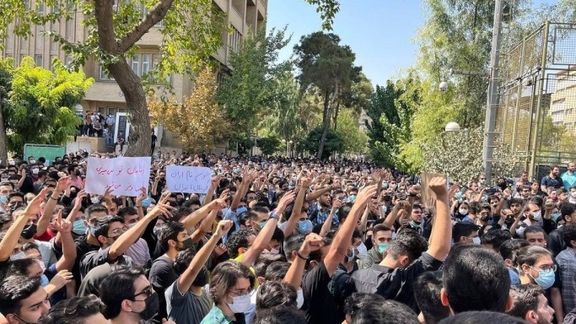
Forty Iranian lawyers have issued a statement saying most people no longer want the Islamic Republic and called on their peers to speak up and defend the people.
In a statement about the ongoing protests, 40 Iranian solicitors on Wednesday said confronting “the illegitimate will [of the government] and its decisions and laws” is the right of the people adding that “at the moment our concern is freedom and judicial justice.”
Iran has been gripped by protests since the death in custody of Mahsa Amini, a 22-year-old Iranian of Kurdish origin who had been arrested on September 13 for allegedly breaching the Islamic dress code and died three days later from severe head trauma. Protests spread fueled by public outrage over a crackdown that led to the deaths of other young men, women, and children. Now in their seventh week, the protests show no sign of ending.
Referring to Supreme Leader’s autocratic ruling system, the Iranian lawyers strongly criticized the “absolute guardianship of a jurist,” stating “the legitimacy of any law depends on public will and consent, and no one has the right to decide for them.”
Absolute Guardianship of a jurist or Velayat-e Faqih is a system of governance that has underpinned the way Iran operates since the country’s 1979 Islamic Revolution. At its most basic, the theory, which is rooted in Shia Islam, justifies the rule of the clergy over the state.

The statement also accused regime military officials of having “positioned themselves as the representatives of the unseen (God)” and with this “delusional” perception has locked up the will of the majority of the people within the establishment’s laws.”
The signatories argued that this usurpation of power is the cause of the street protests noting that the protesters came to “take back the seat of governance from these racist and incompetent rulers.”
Protest slogans in the past weeks were mainly targeted Supreme Leader Ali Khamenei who considers himself the “representative of God on earth.” Angry demonstrators say, “Cruel Khamenei, We Will Bury You!”
Elsewhere in this statement, the lawyers warned that Iranian citizens “have become familiar with the nature of the ruling clerics and will no longer be deceived by their lies and promises, and in different ways they are asking the Mullahs to leave.”
Clerics have been the target of many protests in the recent uprising of Iranians against totalitarian rule. Videos on social media show young people knock turbans off Mullah’s heads and chant, “Clerics Must Get Lost.”
In this statement, the judiciary of the Islamic Republic is described as a “tool to suppress and stabilize autocracy” that has “non-independent and corrupt officials” and as a result “a corrupt network has ruled to shape the country’s destiny.”
On Sunday, the Iranian regime charged six people in Tehran with “waging war,” “corruption on earth,” “assembly and collusion against national security” and “confronting the Islamic Republic” for participating in the protests. “Waging war” and “corruption on earth” are charges that can lead to a death sentence.
The attorneys, who signed this statement considered it their duty to “defend the fundamental rights of the nation against the regime’s abuse and violation” and expressed hope that they would be able to fulfill this responsibility.
Mehrangiz Kar, Arash Ki Khosravi, Mousa Barzin, and Mohammad Moghimiare among the ones who signed this statement.
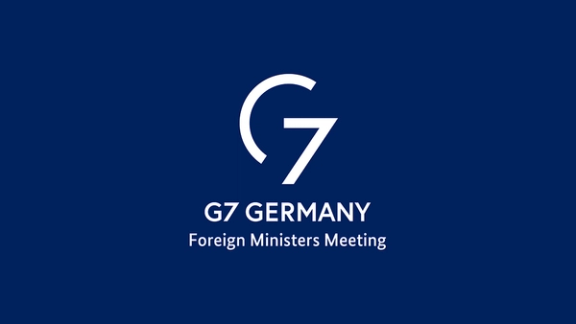
Foreign ministers of the Group of Seven (G7) are set to discuss Iran’s crackdown on antigovernment protesters when they open two days of talks in Germany this week.
The top diplomats of the world’s major industrialized democracies — Britain, Canada, France, Germany, Italy, Japan and the United States -- are scheduled to hold meetings in the town hall of the western German city of Munster on Thursday and Friday.
In addition to the Islamic Republic’s brutal crackdown on the ongoing protests, ignited by the death in custody of 22-year-old Mahsa Amini, they will be talking about Tehran’s supplying Russia with armed drones and other weapons for use in Ukraine.
In a press briefing Tuesday, United States State Department spokesman Ned Price faced questions as to what the US planned to do over alleged Iranian arms supplies to Russia. He said the US was pursuing “every relevant and appropriate tool in our tool kit” to curb Iran’s reported supply of military drones, including sanctioning Iranian commanders and defense companies.
The G7 foreign ministers from the Group of Seven nations will also grapple with the implications of Russia’s invasion of Ukraine and China’s growing economic clout.
In mid-October, gender equality ministers G7 expressed "solidarity with the people rallying in Iran against the violations and abuses of their human rights and fundamental freedoms."
Meanwhile, the number of signatures in an online campaign aimed at the leaders of the seven industrialized countries of the world, G7, has surpassed 720 thousand. The petition calls on these countries to recall their ambassadors from Iran and expel diplomats and officials of the Islamic Republic.
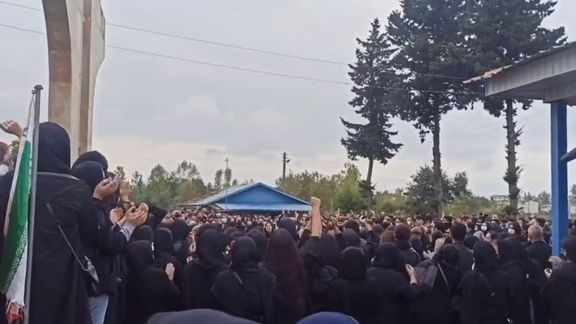
Iranians once again braved the violent crackdown by the Islamic Republic and poured into streets Wednesday evening, amid threats of death sentences for protesters.
In the central city of Isfahan, angry protesters held rallies near Chaharbagh neighborhood while city officials had cut the electricity in several districts.
People in Tabriz took to streets and in Mashhad, northeast, demonstrators set fire at billboards to show anger at government brutality.
Youths in Bukan in West Azarbaijan province blocked the transit road to Tabriz by lighting fires. In the Kurdish city of Marivan demonstrators were chanting that they will not stop their fight against the authoritarian rule.
Videos show that protesters used a mosque loudspeaker to invite their fellow citizens to join them in their movement.
In the city of Mahabad in West Azarbaijan some overnight protests were staged with people lighting fires and blocking streets.
People in Shiraz published some fliers to call for a protest rally on Thursday.
Earlier in the day, a huge crowd of people attended a mourning procession of a young woman who was killed by security forces forty days ago in the northern city of Nowshahr.
Reports say many people travelled from several other cities to commemorate Hannaneh Kia. They chanted “Death to Khamenei,” and “Death to Dictator.” Videos on social media show that regime forces fired tear gas near the house of the victim.
Videos on social media show people in Qazvin took to streets after nightfall. In capital Tehran women chanted antigovernment slogans on the subway and residents in Ekbatan district repeated their nightly vigil and chanted antigovernment slogans from their windows despite attacks by plainclothes who fired at buildings during the past few nights.
Some other videos show use of violence against peaceful demonstrators in Chitgar neighborhood in western capital.
On Wednesday afternoon, doctors, residents, and medical students of Tehran’s Khomeini Hospital also gathered in front of the Tehran Medical Council chanting slogans in support of the uprising and protested the brutal treatment of medical staff.
The Center for Human Rights in Iran (CHRI) in a statement on Wednesday urged the international community to warn the Iranian authorities against issuing death sentences against detained protesters.
“Issuing death sentences against the protesters—after the Iranian authorities have unlawfully arrested tens of thousands of peaceful protesters and killed hundreds through the indiscriminate use of lethal force to squash the protests—is a blatant attempt to terrorize the Iranian people into silence; it will cement the Islamic Republic’s status as an outlaw state that has no regard for law or life,” said Hadi Ghaemi, CHRI executive director.
In a meeting Monday, Tehran Province Prosecutor Ali Alghasi Mehr said some 1,000 indictments had been issued in connection with recent “riots”.
In the same meeting, Judiciary Chief Gholam-Hossein Eje’i said, “Those who intend to confront and subvert the regime are dependent on foreigners and will be punished according to legal standards,”suggesting that some protesters would be charged with collaborating with foreign governments.
The Islamic Republic has repeatedly made claims that “foreign enemies” have provoked the unrest without any evidence.
On Sunday, the Iranian regime charged six people in Tehran with “waging war,” “corruption on earth,” “assembly and collusion against national security” and “confronting the Islamic Republic” for participating in the protests.
“Waging war” and “corruption on earth” are charges that can lead to a death sentence.
“Death sentences against people for exercising their right to freedom of expression, after the killings of peaceful protesters, abductions and gunning down of children, and other atrocities, indicate a government that is out of control and willing to squash protest at any cost,” said the statement by Center for Human Rights in Iran.
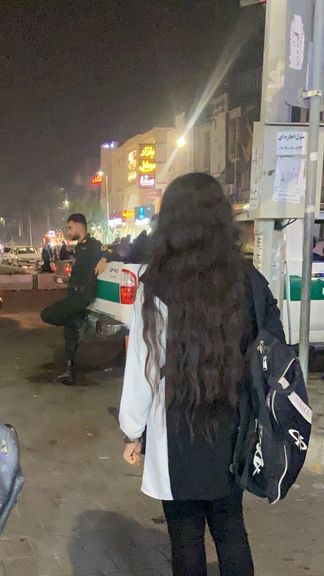
Calls for expulsion of the Islamic Republic from the UN Commission on the Status of Women (CSW) are getting stronger with the US and the Netherlands joining the chorus.
US Vice President Kamala Harris said on Wednesday that Washington will try to remove Iran from the 45-member CSW over the government's denial of women's rights and brutal crackdown on protests.
The Islamic Republic is just starting a four-year term on the commission, which meets annually every March and aims to promote gender equality and the empowerment of women.
"The United States believes that no nation that systematically abuses the rights of women and girls should play a role in any international or United Nations body charged with protecting these very same rights," Harris said in a statement.
"Iran has demonstrated through its denial of women's rights and brutal crackdown on its own people that it is unfit to serve on this Commission," Harris said.
On Tuesday, the Dutch Senate adopted a motion calling on its government to “support any proposal” to remove the Iranian regime from the UN Women’s Rights Commission.
UN Watch, an independent non-governmental human rights group based in Geneva, has drafted a resolution for the 54-nation UN Economic Social Council (ECOSOC) to remove Iran.
A group of women leaders in business, politics, and the arts from over 14 countries has called for the immediate expulsion of the Islamic Republic from the UN Commission.
In an open letter, published in The New York Times on Sunday, October 29, the preeminent leaders expressed their solidarity with Iranian women and girls, as well as men, who are holding daily protests for more than 40 days across the country and abroad following the death in custody of 22-year-old Mahsa Jina Amini.
Citizens of Karaj and Arak held rallies on Thursday to honor the memory of Hadis Najafi and Mehrshad Shahidi, two young protesters killed by the security forces 40 days ago and seven days ago, respectively.
The 40th day of a loved one’s death – as well as the seventh day -- have a special significance in Iran, and in case of an unjust killing, such as the young protesters who were killed by the agents of the Islamic Republic, the occasion turns into public mourning and fuels angry protests.
Videos obtained by Iran International show a huge crowd of people flocking to Behesht-e Sakineh cemetery in Karaj, west of Tehran, to attend the mourning ceremonies to honor protesters Hadis Najafi and Parsa Rezadoust.
The security forces blocked the roads to the graveyard and fired teargas at the bereaved families as well as other people who wanted to reach the cemetery, arresting many. Outraged protesters then blocked the highway out of the graveyard with stones and concrete blocks, chanting "Death to Khamenei."
In Arak, a huge number of people held a protest rally, chanting "Death to This Leadership" during the ceremony to mark the seventh day after the death in custody of Mehrshad Shahidi, a 20-year-old chef who was beaten to death with batons.
Holding gatherings for funeral services and 40th day or seventh day ceremonies pose a challenge to the regime because the more it cracks down and kills people, the more protests follow, leading to a vicious cycle.